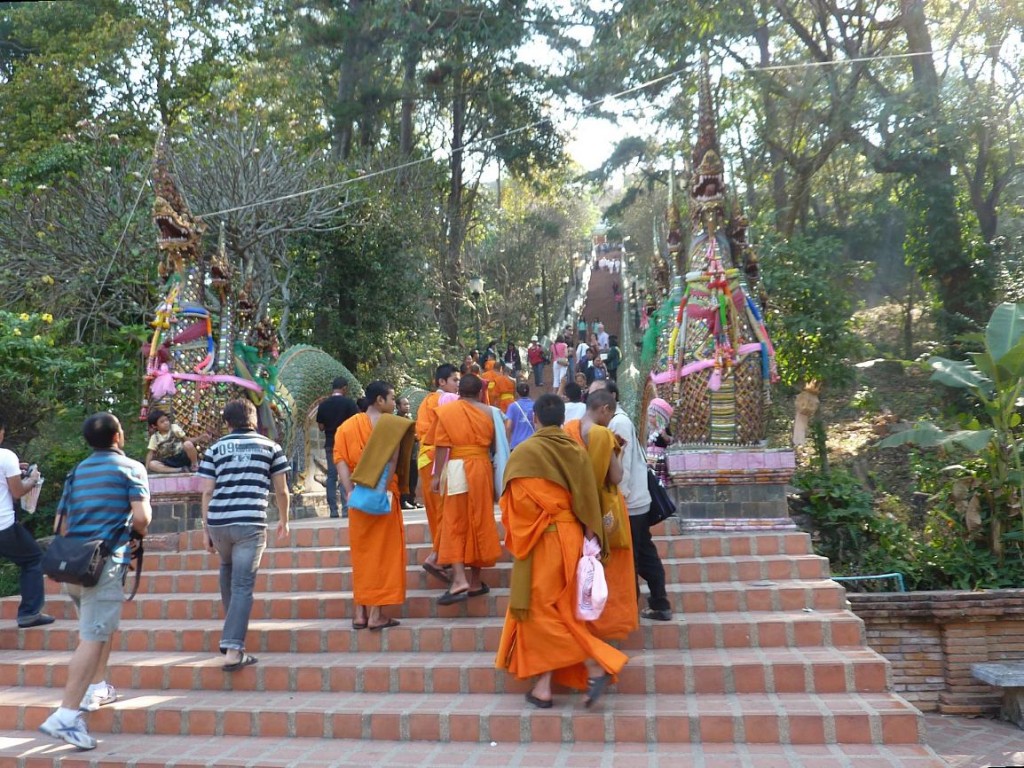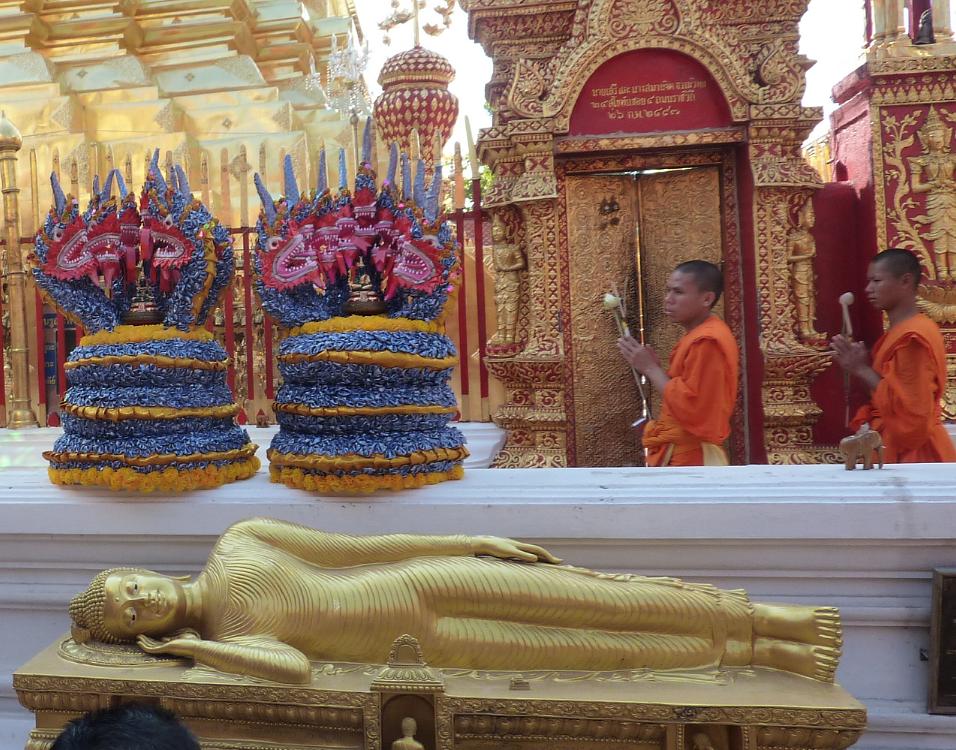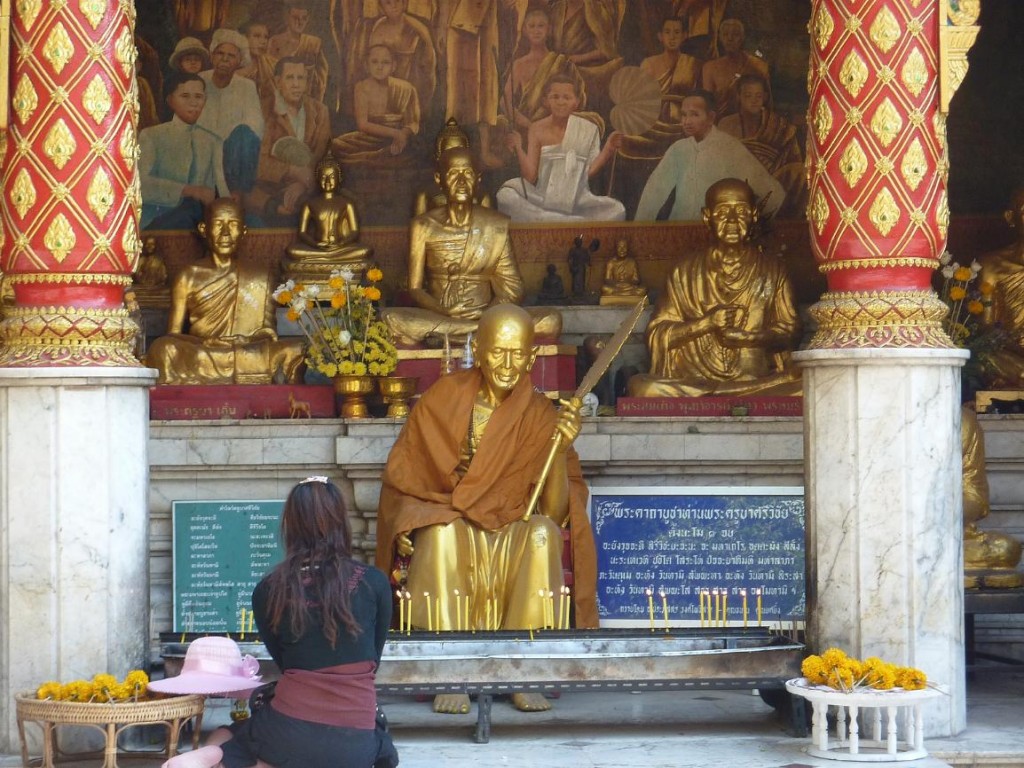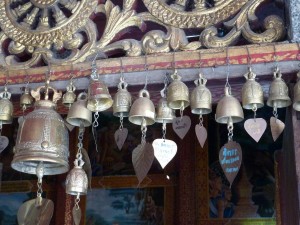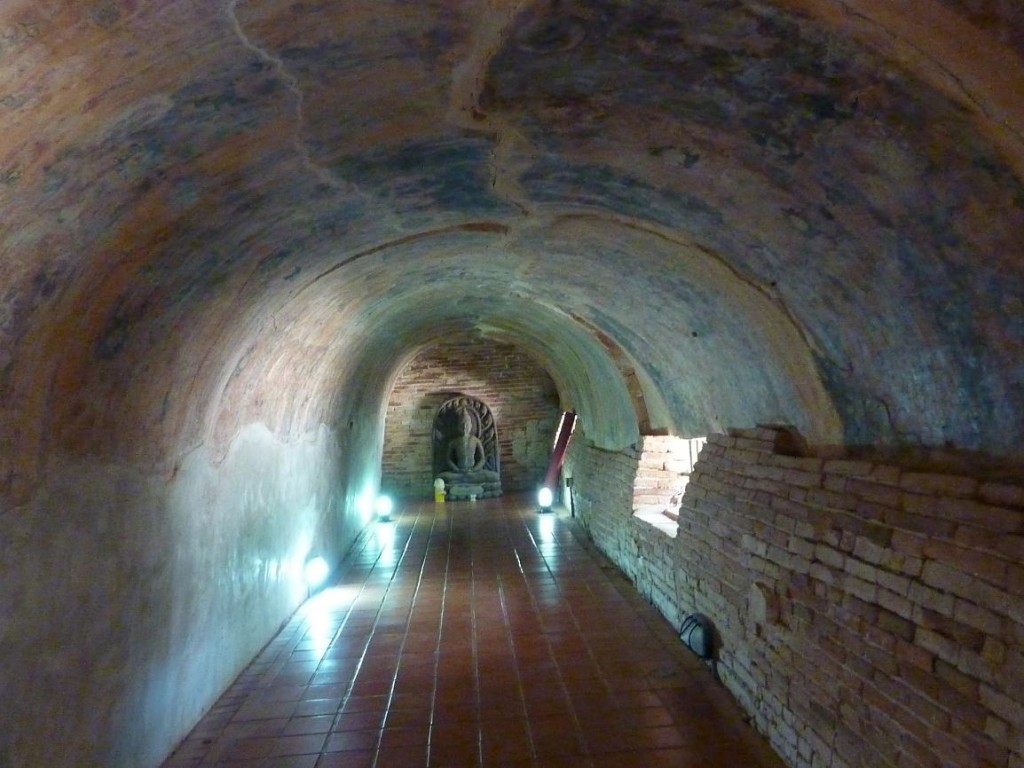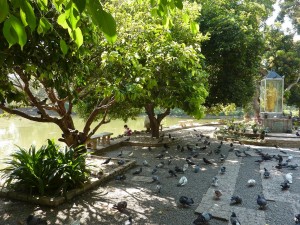 Wat Phrathat Doi Suthep overlooks Chang Mai from the top of the mountain west of the city. One can reach the top of the mountain (Doi Suthep) by car or taxi, or by shared songthaew. Some intrepid souls bicycle the 13 km up the steep, winding road.
Wat Phrathat Doi Suthep overlooks Chang Mai from the top of the mountain west of the city. One can reach the top of the mountain (Doi Suthep) by car or taxi, or by shared songthaew. Some intrepid souls bicycle the 13 km up the steep, winding road.
To visit the temple, it is wise to start early to avoid the worst of the ever-present crowds, and in hopes of seeing the view when the skies are less smoky. In late February, when I was there, an early start is unlikely to make much difference in the visibility. View or no, the journey to the top of Doi Suthep is one nearly every visitor to Chiang Mai will make.
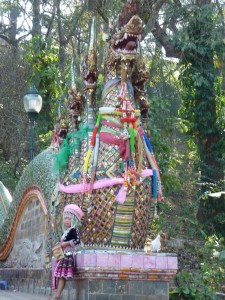 From the road, one climbs some 300 steps to reach the temple plaza. The stairway is guarded by large, multi-headed nagas wrapped with bright colored silks and flowers. As you climb, you will have much company. Many young monks visit Wat Doi Suthep, along with Thai Buddhists, and of course many foreign visitors.
From the road, one climbs some 300 steps to reach the temple plaza. The stairway is guarded by large, multi-headed nagas wrapped with bright colored silks and flowers. As you climb, you will have much company. Many young monks visit Wat Doi Suthep, along with Thai Buddhists, and of course many foreign visitors.
Buddhist temples are often located high on hilltops and reached by such strenuous climbs. Arriving in such a manner is a form of meditation, providing a ready heart and head for the prayerful connection to come. For those who cannot make the climb, there is an option to ride up by tram, but devout Buddhists will always walk up if they can in any manner manage to do so.
One of a pair of ogres which guard the last flight of steps:
Finally at the top, golden images of the Buddha are arrayed all around the plaza which circles the stupa. Bells hang from the eaves, creating the characteristic music of the wats.

Inside the railing encircling the stupa, the faithful walk, lotus flower in hand.
On some parts of the railing are chalices. As the walkers make their circles, they will often drop a small coin into each. All of these actions are forms of prayer – the circling, the flower offerings, and the small coins. In another form of prayer in some wats, sheets of gold leaf are applied to the Buddha image. Below, a young woman spends some moments in prayer in front of a shrine dedicated to the most honored monks of Wat Doi Suthep.
Not far from where one leaves Chiang Mai for the climb up Doi Suthep is another wat with a very special feel. Wat U Mong is a forest wat atop a hill at the western edge of the city.
A peaceful, open forest forms the setting for a monastery, a meditation school, and a small museum. Buddha images integrate quietly into this natural setting.
At the top of the hill is a massive brick terrace and an ancient chedi, built in 1380.
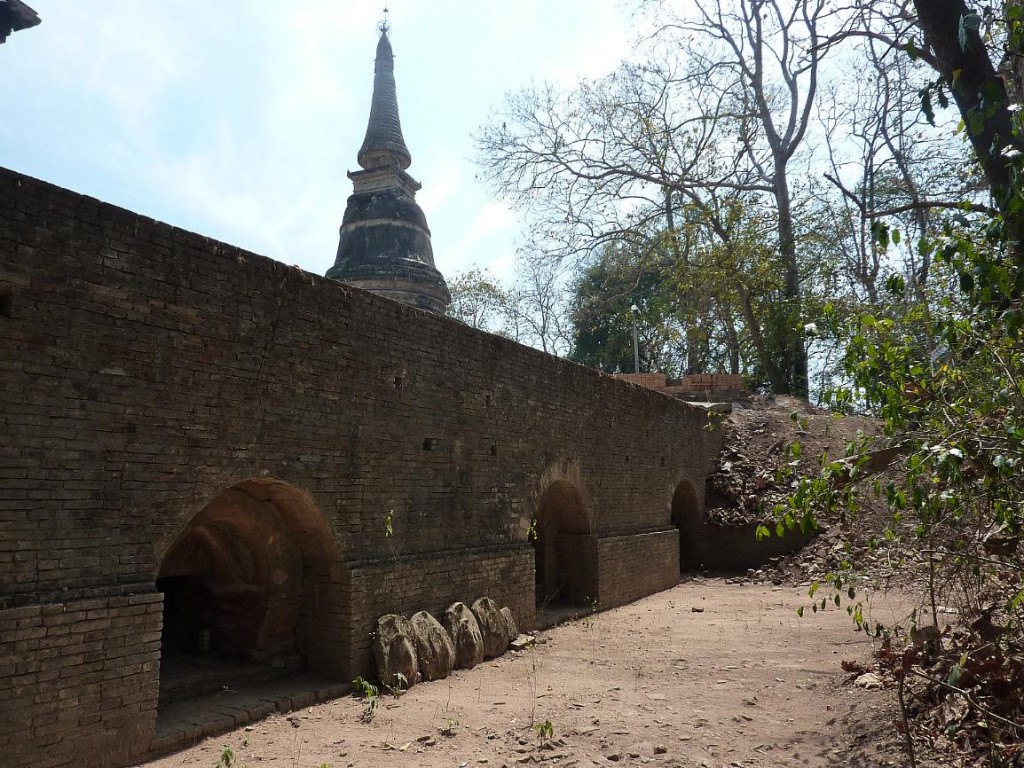
Underneath the terrace are tunnels with quiet corners for meditation. On this hot afternoon, having walked a couple of miles to reach Wat U Mong, I could not have found a more inviting place. In one of these corners, I lay down on the cold tile of the floor with my daypack as a pillow, letting the chill seep into my back. And slept.
Also on the grounds of Wat U Mong there is a small lake.
Along the lake are cottages for the monks, many of them visiting from other countries. Surely they will long remember their visit to Chiang Mai with this setting as their temporary home.
When it was at last time to leave, there was no tuk tuk or taxi or songthaew at the entry. Rather than wait for one to come by, I thought I could find my way back and set out through the surrounding residential area. The Old City was much farther away than I had imagined, and I eventually asked a young man on a motorcycle for directions. This lovely long-hared Thai instead offered me a ride. When I asked how much, he said no, he would just take me.
Merit, for him, in its purest, most generous form. Sweet memory of kindness. Sweet memories of Chiang Mai

